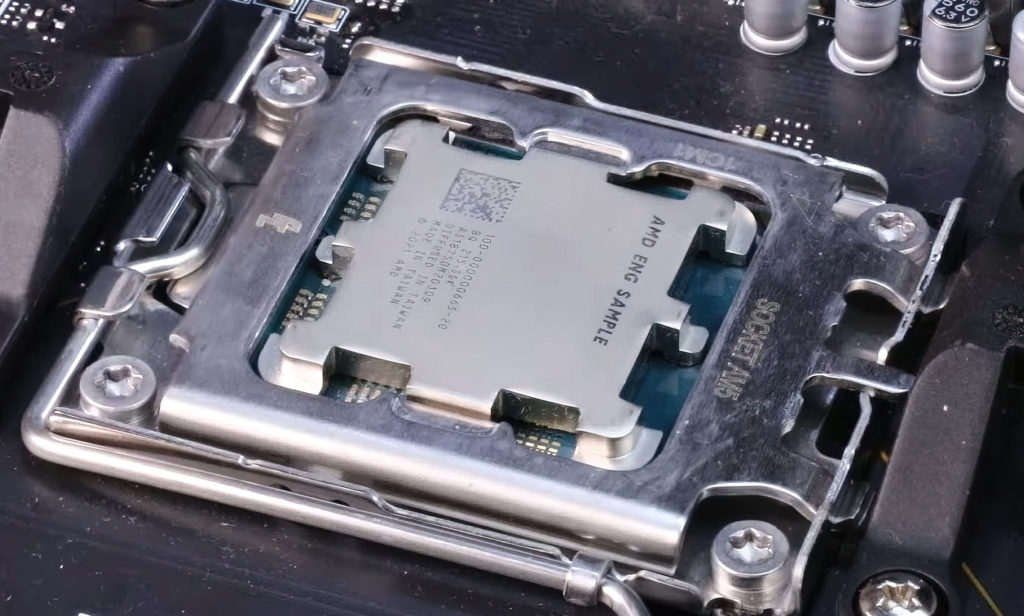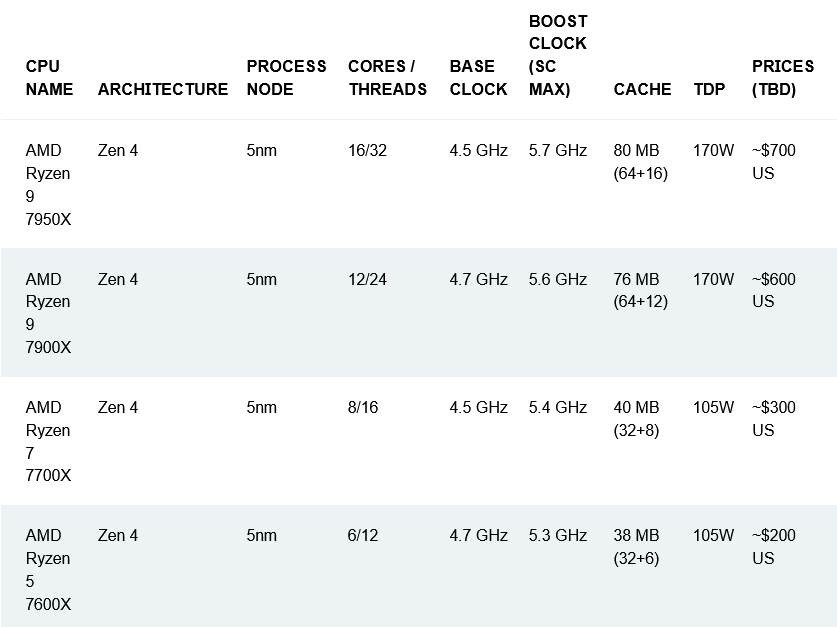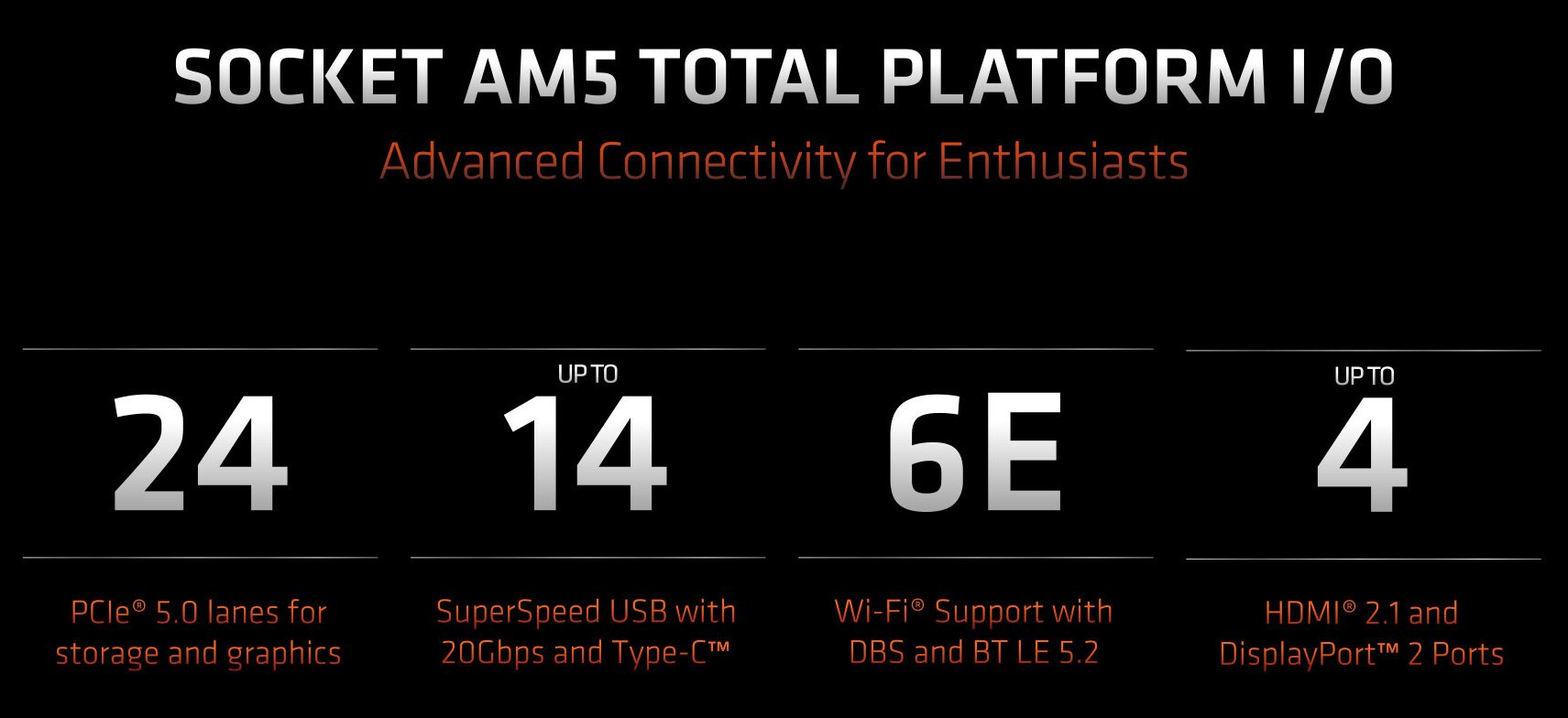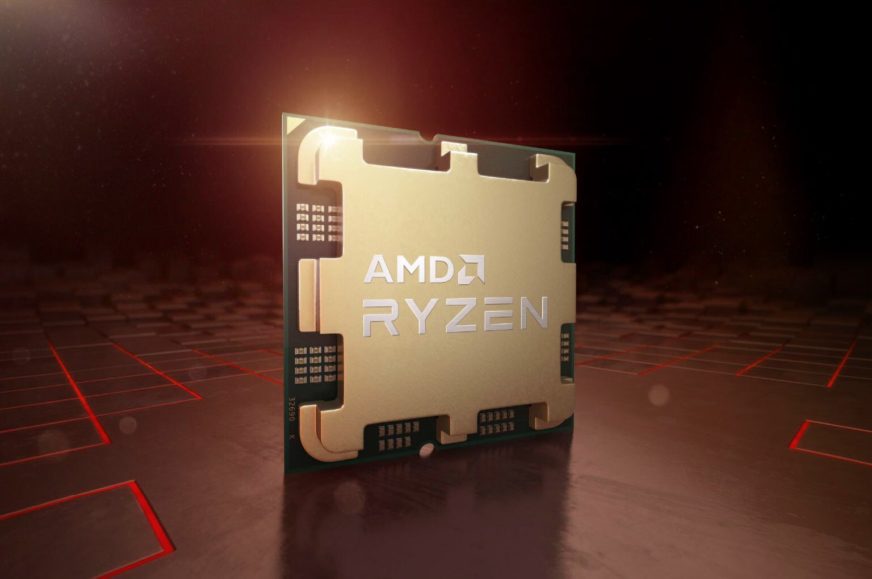Parameters of Ryzen 7000, the first processors with the Zen 4 architecture
According to leaks, AMD is expected to release their new desktop processors with Zen 4 architecture and 5nm manufacturing process in six weeks and will formally unveil them before the end of the month. And it seems the parameters of these CPUs are now also out. We even have them from two sources, improving the odds this info is legit. Unfortunately, there’s bad news in the power consumption department: TDPs are getting much worse.
According to the leak from AMD’s website four models are expected to come out in the first wave, and it’s precisely these four SKUSs which parameters have now been reported by WCCFtech and before that by Chinese leaker ECSM_Official on Bilibili (who offered fewer details). It’s possible that things are suddenly “leaking” like this because AMD has started to brief the media (or maybe mainly OEM partners and PC manufacturers at this point) under NDA.
The top of the range will be the Ryzen 9 7950X with 16 Zen 4 cores and 32 threads. According to WCCFtech, it will have a base frequency of 4.5 GHz, which would be 1100 MHz higher than the previous 5950X model. The boost clock, which should apply to single-threaded workloads and can probably only be achieved on preferred cores, is reportedly 5.7 GHz, 800 MHz higher than the Zen 3 generation. Keep in mind that according to AMD, Zen 4 (compared to Zen 3) should have 8 to 10 % better performance at the same frequency (called IPC), as well. Single-threaded performance could therefore be up to 25 % better than on the Ryzen 9 5950X.
But if that’s the figure in the official specs, it’s possible that in reality the CPU will be able to boost a little higher (because this was the case in the Ryzen 5000 generation), possibly confirming reports of up to 5.85 GHz clock speeds allegedly being tested with samples. This would be unofficial though and the processor might not be able to reach that actual maximum in every case (and it might be reached only for a short time).
This processor will contain 2 × 32 MB L3 cache, will be composed of a 6nm IO chiplet and two 5nm chiplets of eight cores each. The TDP is 170 W, so the processor will have moved up a category against the 105W Ryzen 9 5950X. However, the TDP will again likely not be the maximum power draw. In multi-threaded loads, the real power ceiling should probably be the so-called PPT limit, which could be around 230 W (this is not confirmed yet, but this value tends to be 35 % higher than the TDP).

The second most powerful model will be the Ryzen 9 7900X, which will only have 12 Zen 4 cores and 24 threads, but will retain a full 64 MB of L3 cache (or more accurately, the 2×32 MB). The base clock speed will increase to 4.7 GHz (also 1000 MHz more than the 5900X) and the maximum boost in the specs is supposed to be 5.6 GHz, 100 MHz lower than the top model. According to leaks, AMD will also deploy 170 W TDP on this model (so the same 230 W PPT could apply).
High power draws, because of competitor?
The fact that the TDP of both Ryzen 9 should be 170 W was shared some time ago by leaker Kopite7kimi, known for leaking information about upcoming Nvidia GPUs. So it looks like this is going to be proved correct (unless the current leak information is actually based on just his tweet in a roundabout way). It’s apparently a price to pay for the high base clock speeds. Hopefully, high all-core boosts will also be achieved thanks to the higher TDP (or PPT). However, what is a shame is that due to this the power efficiency probably won’t rise as much as the 5nm process (which helps Apple’s processors a lot in this regard) would allow.
It is probably a response to the fact that this policy of increasing power draw has been used by Intel for some time, which has so far achieved a performance advantage against Ryzen thanks to it. For those, AMD has so far limited power draw to 142 W (for models with 105 W TDP), but Intel has been indulging in up to 240–250 W, which can add a not insignificant extra performance. Unfortunately, the market hasn’t pushed Intel to refrain from using these high wattages, so perhaps AMD has assessed that it needs to abandon their lower-power policy as well, to get equal starting position in reviews. This is unfortunately at the expense of efficiency and power draw (and also power usage costs), noise and temperatures. In addition to more electricity wasted, it also makes the boards more expensive.
105W octa-cores and hexa-cores
The third model in the lineup will be the Ryzen 7 7700X, which should already have just 105 W TDP (AMD now uses a PPT limit of 142 W for this TDP, so that could be the maximum power draw in boost for this model as well). This model is based on only one 5nm CPU chiplet (plus the IO chiplet), and thus has 32 MB of L3 cache in a single block. The clock speed will be 4.5 GHz base and the maximum boost is said to be 5.4 GHz, so there will be a 200MHz step down against the 7900X model. Again though, we can’t rule out existence of some extra “shadow turbo” unlisted in the specs.
The last (for now) model is the Ryzen 5 7600X, which will have six Zen 4 cores and 12 threads. Its base clock speed will be 4.7 GHz, but the maximum (officially stated) boost is only 5.3 GHz. The processor will still have 32 MB of L3 cache. But there is an unpleasant surprise – here too the TDP will be increased to 105 W, while in the Zen 3 generation the hexa-core was only 65 W. Even the Ryzen 7 7700X was actually 65W (only the more expensive octa-core 5800X has 105W TDP), so from a certain point of view we can say that the TDP has moved to a higher and worse category for all four models, in exchange for those high clock speeds.

The IO chiplet of the processors should provide 24 PCI Express 5.0 lanes for GPUs and NVMe SSDs and a dual-channel DDR5-5600 controller for all these models. It also contains integrated graphics, but there are no specs for that yet. The processors are of course manufactured for use in the AM5 socket and boards with the X670, X670E, and B650 chipsets.
Additional models may come later, so we may still see some 65W versions eventually. Also, models (or a model) of the Ryzen 7000 with 3D V-Cache for gamers should be released later, which would increase the L3 cache to 96 MB for the eight-core models (or to 2×96 MB if a 16-core is offered). These models could possibly launch at the turn of the year or in the spring of 2023, those these are just guesses at the moment.

The competition won’t wait long either
Let’s point out that the parameters of the Raptor Lake desktop processors, which will be released on the LGA 1700 desktop platform as Intel’s answer have also also already leaked out. This October will see the release of three 125W enthusiast models (the cheaper models with locked multipliers won’t come out until later in January 2023). You can see their specifications compiled from leaks here – though in this case they’re not as complete as the data for AMD’s upcoming processors.
Sources: WCCFtech, VideoCardz, Bilibili, HXL
English translation and edit by Jozef Dudáš
⠀








